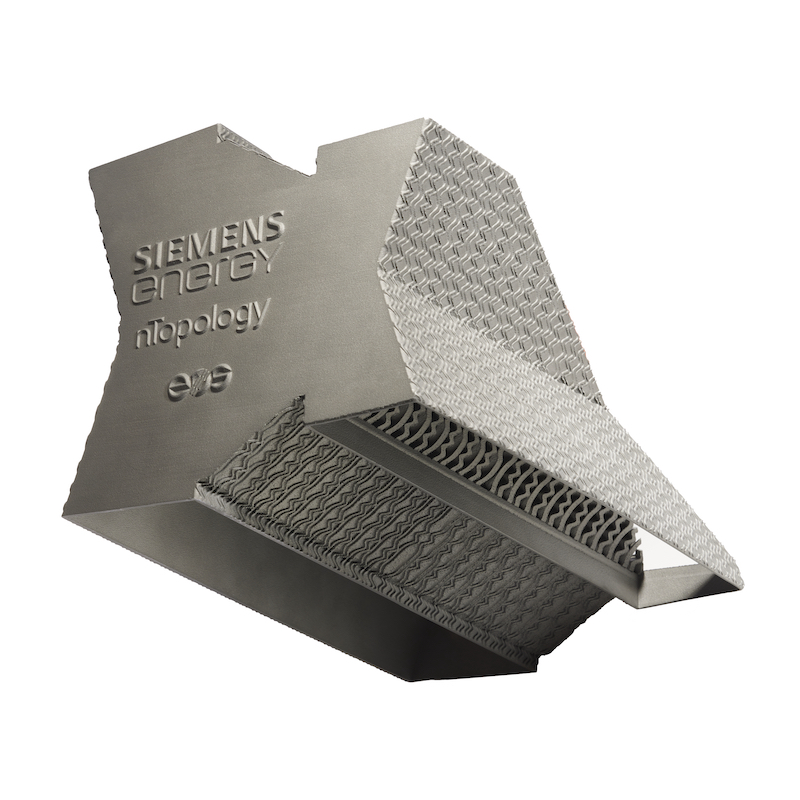
nTopology claims it can reduce 3D design file sizes by 99 percent
nTopology, the developer of generative design software for engineering, and EOS, an industrial 3D printing company, are developing a new “Implicit Interop” capability, solving what they see as “a major bottleneck in the additive manufacturing workflow”.
The companies say they are achieving this by allowing the transfer of the most complex designs in megabyte-sized files, thereby quickening the time to manufacturing.
Previewed at the Formnext industry event a few months ago, the technology advancement was said to be “eagerly received” by nTopology partners and customers.
Typically, with 3D design software applications, file sizes for output to 3D printers can exceed tens of gigabytes.
However, nTopology and EOS say their new nTop Implicit File can result in up to “99 percent smaller file sizes, 500x faster file generation and 60 percent faster load time”.
Such efficiencies would make files more readily available to additive manufacturing build preparation software for manufacturing.
nTopology will provide an Implicit Interop plugin for EOS customers that is compatible with EOSPRINT 2.14, expected to release in June 2023.
The Formnext preview also featured a large industrial heat exchanger created as a proof-of-concept by Siemens Energy. Its complex design, exported to an nTop Implicit File in a matter of seconds, required less than 1 MB of storage space.
Then, “easily imported to EOSPRINT, the file was used to additively manufacture the heat exchanger on an EOS M 290 industrial 3D printer”, says the company.
To spur even broader adoption of their Implicit Interop technology, nTopology and EOS are also working with the 3MF Consortium on the standardization of the Implicit File format.
It is expected that the technology will be incorporated in a future update to the 3MF industry-standard 3D printing file format.
Bradley Rothenberg, nTopology co-founder and CEO, says: “nTopology has opened up design freedom and enabled engineers to design products that they weren’t able to do before.
“This has led to even more complex designs that have led them to uncover design data bottlenecks in printing those designs.
“With our focus on being a useful tool for engineers – to not just design but produce these parts – we worked with EOS to come up with a solution to enable these complex parts to be printed. We look forward to advancing the entire industry based on this type of partnership with OEMs.”
Alexander Bockstaller, software product line manager at EOS, says: “With modern design approaches such as topology optimization, generative design, and DfAM on the rise, the complexity of part geometries has been skyrocketing.
“Discretization of such complex models often results in meshes with file sizes greater than several gigabytes which can make them very challenging to handle in later production steps.
“EOS tackles the problem and drives the standardization of implicit geometry representation, which makes it possible to build designs that were previously unbuildable.”
Ole Geisen, head of engineering services for additive manufacturing at Siemens Energy, says: “This is a fascinating technical development. nTopology and EOS are years ahead of the game.
“The rest of the AM ecosystem now needs to catch up. File size hasn’t been much of a challenge in the past.
“However, with the industry’s advancements regarding topology optimization, generative design, and design for additive manufacturing (DfAM), part geometries are getting increasingly complex.
“As a result, exchanging such complex geometries with traditional data formats is becoming more challenging, severely hindering thermal management innovation.”
